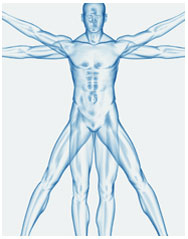WAY FORWARD»

Understanding our Connective Tissue System
Complaints after Breast Cancer Treatment
Date: Friday 8th – Sunday 10th March 2013
Venue: The Meridian Centre, Birmingham UK
Times: 9am – 5pm
Teacher: Willem Fourie PT, MSc ©
Background of level of evidence on which the course is based:
This course is based on detailed dissections and study of the functional and integrated fascial anatomy of the shoulder girdle. Various manual therapy techniques, fascial, viscerofascial and myofascial release techniques were used and modified to accommodate the new understanding of applied anatomy and the role played by connective tissue in function. The clinical approach has largely evolved from integrating work from Francine St George (Australia), Stuart Robertson (United Kingdom), Tom Myers (United States) and Luigi and Carla Stecco (Italy).
Course objectives:
This workshop is to introduce the participant to the connective tissue and fascial systems and its role in normal function. A further aim is sharing how dysfunction and pathology may develop by interference within this system. By understanding how various systems interlink to determine function, integrated treatment strategies are introduced. Participants will develop skills for evaluating and treating of individual patients using an integrated approach.
Elements and subjects to be covered during the course:
1. Body design:
All structures are involved in movement quality. Seeing the body as a pre-stressed “biotensegrity” for musculoskeletal function is described. This expands the view of linear biomechanics to explain movement into a more realistic view of the body functioning as a non-linear system where small changes can produce a disproportionately large output.
2. Connective tissue:
It is further aimed at bringing connective tissue and fascia as a microscopic subject into the macroscopic domain. The fascial system as a living tissue constituting our “organ of form” that can be assessed, moved and manipulated. Aspects covered in the workshop:
a) The structure and classification of connective tissue.
b) Vessels and nerves of connective tissue where its roles in fluid transfer, proprioception and sensation are highlighted.
c) Connective tissue architecture. Design differences on a macroscopic level in different parts of the body with special reference to function and movement quality.
d) Different fascial layers encountered therapeutically i.e. skin/epidermis, superficial fascia/hypodermis, deep fascia and myofascia are explained and evaluated.
e) Functions and roles of connective tissue and fascia.
f) Physiological changes due to injury, immobilization and scarring.
g) Wound healing and how tissue responds to manual therapy during all stages of healing.
3. Contributors to dysfunction:
How a “local” tissue dysfunction (loss of tissue mobility) can contribute to a “global” body response (changed movement patterns) is looked at.
4. Manual assessment and treatment of the connective tissue:
The principles of fascial assessment and treatment are explained, demonstrated and practiced. A grading classification of the depth of touch and palpation of tissue is introduced.
The palpation for tissue mobility, flexibility and glide are carefully demonstrated and practiced within the group. The participants learn to identify the extent, quality direction and depth of compromised tissue mobility.
5. Complaints after Breast Cancer Treatment:
Dysfunction (lymphoedema, restricted movements and weakness) as well as pain syndromes after the treatment for primary breast cancer are fully explained. Details of surgical and reconstructive procedures are given and demonstrated. The detailed post breast cancer knowledge is then used to formulate an individualised assessment and treatment plan for every patient and stage of recovery.
After this workshop, participants should have a clearer understanding of:
- The functional anatomy and biomechanics of the upper quarter.
- The structure of connective tissue, its classification, and its role in normal musculoskeletal function.
- How this system is damaged by trauma, surgery, overuse, or habit, and ultimately the body’s postural responses leading to later complaints – even in non-related areas of the body.
- How to evaluate the connective tissue/fascial system.
- How all the above guides you, the therapist, through the most appropriate personalized treatment strategy for every individual patient.
The workshop will be an intense mix of theory and practical work, and will therefore only allow a limited number of participants.
As places are limited for more information email pauline@simplyholistictherapies.co.uk,
Willem Fourie
